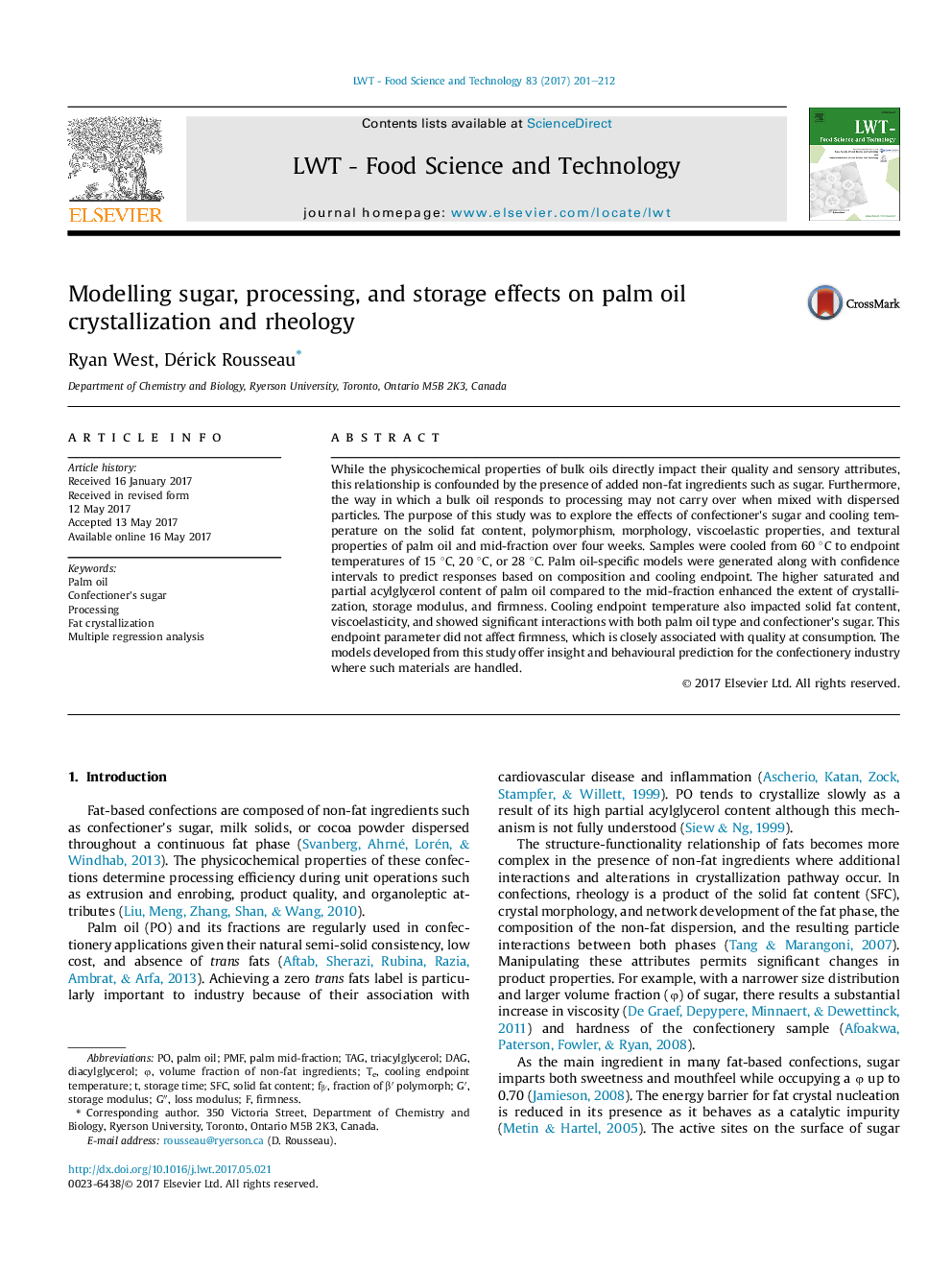| Article ID | Journal | Published Year | Pages | File Type |
|---|---|---|---|---|
| 5769091 | LWT - Food Science and Technology | 2017 | 12 Pages |
â¢Oil-sugar blends underwent continuous recrystallization during storage unlike bulk oils.â¢Cooling endpoint may control processing efficiency without impacting final firmness.â¢Models were generated to accurately predict physical properties of confectionery palm oils.
While the physicochemical properties of bulk oils directly impact their quality and sensory attributes, this relationship is confounded by the presence of added non-fat ingredients such as sugar. Furthermore, the way in which a bulk oil responds to processing may not carry over when mixed with dispersed particles. The purpose of this study was to explore the effects of confectioner's sugar and cooling temperature on the solid fat content, polymorphism, morphology, viscoelastic properties, and textural properties of palm oil and mid-fraction over four weeks. Samples were cooled from 60 °C to endpoint temperatures of 15 °C, 20 °C, or 28 °C. Palm oil-specific models were generated along with confidence intervals to predict responses based on composition and cooling endpoint. The higher saturated and partial acylglycerol content of palm oil compared to the mid-fraction enhanced the extent of crystallization, storage modulus, and firmness. Cooling endpoint temperature also impacted solid fat content, viscoelasticity, and showed significant interactions with both palm oil type and confectioner's sugar. This endpoint parameter did not affect firmness, which is closely associated with quality at consumption. The models developed from this study offer insight and behavioural prediction for the confectionery industry where such materials are handled.
